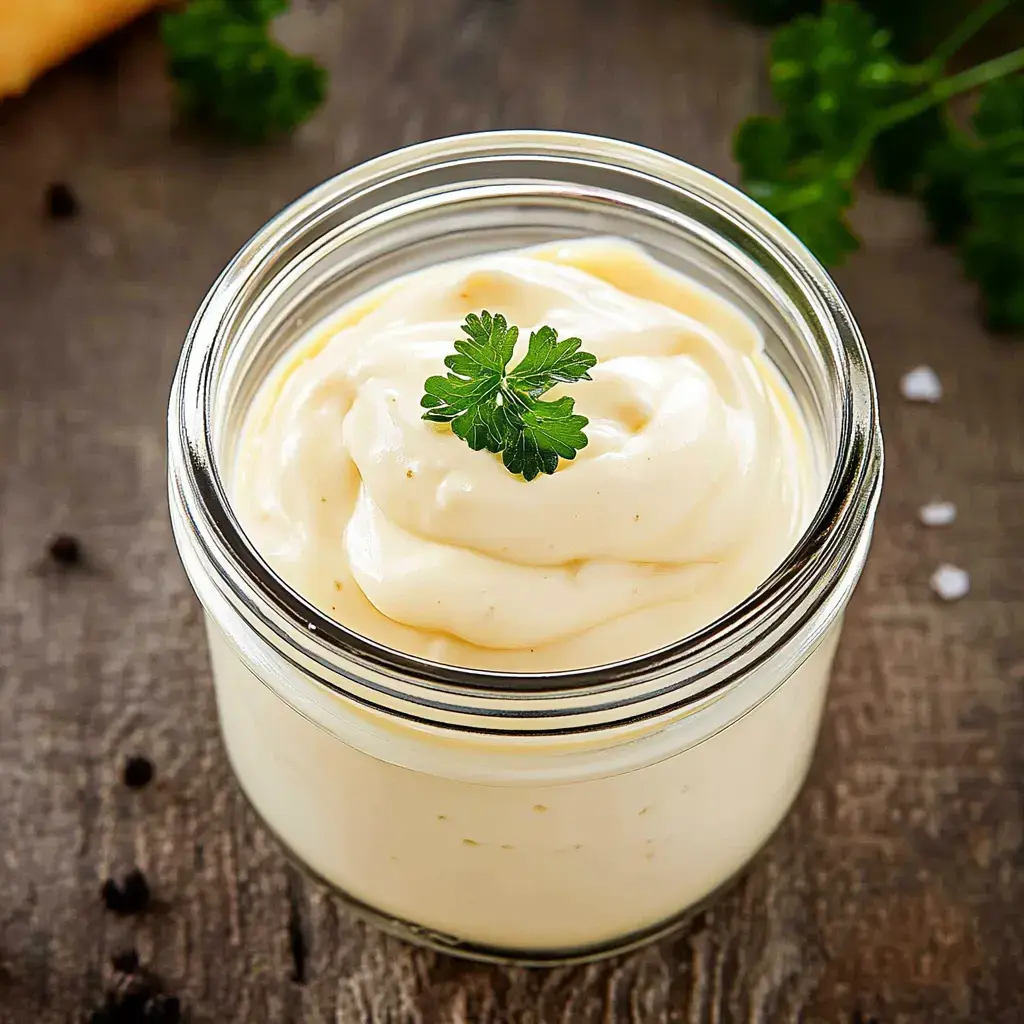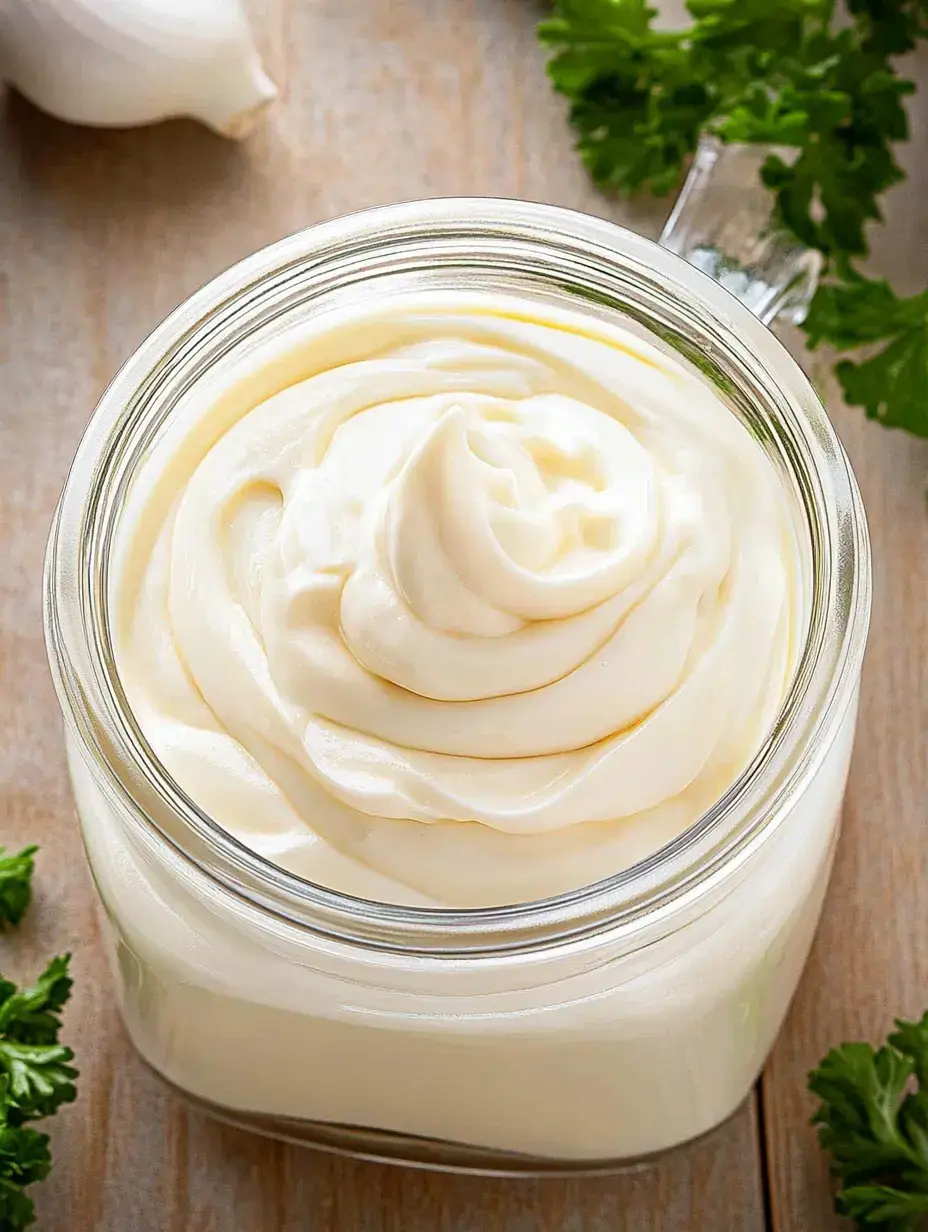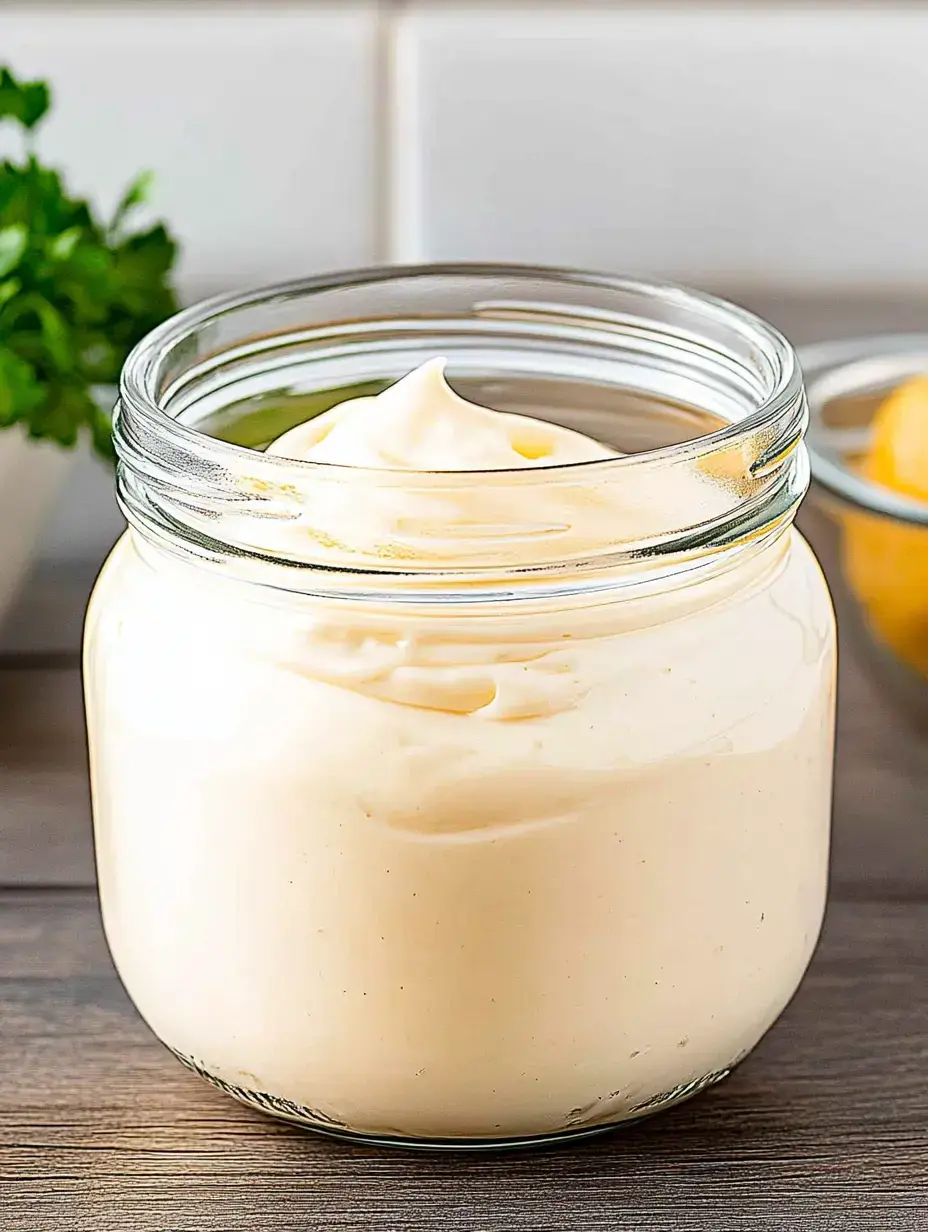 Pin it
Pin it
Let me share my absolute favorite homemade mayo recipe that completely changed my kitchen game. Using a whole egg instead of just the yolk was my breakthrough moment - it creates the silkiest, most stable mayo you'll ever taste. Once you try this version, you'll never look at store-bought the same way again.
The Magic of Mayo
Making mayo from scratch is like watching kitchen chemistry in action. That moment when your ingredients transform from separate liquids into a thick, creamy spread feels like pure magic. Plus, knowing exactly what goes into it makes it so much better than anything from the store.
My Not-So-Secret Ingredients
- Egg: One large egg at room temperature is crucial.
- Fresh Lemon Juice: Just squeezed makes all the difference.
- Oil: I love using avocado or light olive oil.
- Salt: A teaspoon to bring out the flavors.
- Optional Garlic: Two drops of juice for extra zing.
Let's Make Mayo
- The Base Mix
- Start with your room temp egg, salt, and lemon juice in the food processor.
- The Oil Trick
- Here's where the magic happens - drizzle that oil in super slowly while it runs.
- Watch and Wait
- Keep going until it's thick enough to hold its shape on a spoon.
- Chill Time
- Pop it in the fridge for at least 4 hours for best results.
Temperature Matters
Getting your ingredients to room temperature isn't just me being fussy. Cold eggs can make your mayo break, and room temp ingredients help everything blend perfectly. I usually take everything out about an hour before starting.
 Pin it
Pin it
Equipment Choices
While I love using my food processor, you can also use an immersion blender or even whisk by hand if you're feeling strong! Each method works great, just remember that slow and steady wins the race with the oil.
Troubleshooting Tips
If your mayo starts to look curdled or separated, don't panic! Start fresh with a new egg in your processor and slowly drizzle in your broken mixture like it's oil. Works like magic every single time.
Storage Secrets
Keep your mayo in a glass jar with a tight lid and it'll stay fresh in the fridge for up to three weeks. Just remember to always use clean utensils when scooping – no double dipping!
Flavor Adventures
Once you've mastered the basic recipe, try adding different flavors. Roasted garlic and herbs make an amazing aioli, while chipotle peppers create a spicy version perfect for tacos.
Safety First
For peace of mind, especially when serving to kids or pregnant women, use pasteurized eggs. They work just as well and eliminate any food safety concerns.
Perfect Pairings
This mayo makes the best base for potato salad and coleslaw you've ever tasted. I also love using it for tuna salad – the creamy texture really shines through.
Dressing It Up
Turn your mayo into amazing salad dressings. Mix in herbs for green goddess, add anchovy paste for Caesar, or blend with buttermilk for ranch. The possibilities are endless!
Oil Options
While I usually use avocado or light olive oil, you can experiment with different oils. Just avoid extra virgin olive oil as it can be too strong. Neutral oils like canola or grape seed work great too.
Texture Talk
Your finished mayo should be thick enough to hold its shape on a spoon but still easily spreadable. If it's too thick, thin it with a few drops of water or lemon juice.
Make It Lighter
For a lighter version, try substituting half the oil with Greek yogurt. It still maintains that creamy texture but with fewer calories. Perfect for when you want to keep things on the healthier side.
Special Occasion Tips
When I'm hosting dinner parties, I love setting out different flavored mayos as spreads. People go crazy for the garlic version, and the herb-loaded one always disappears first.
Seasonal Twists
Change up your mayo with the seasons. Fresh basil in summer, roasted garlic in fall, or even cranberry mayo for holiday sandwiches. Let what's fresh inspire your flavors.
 Pin it
Pin it
Beyond Sandwiches
Use your homemade mayo as a dip for roasted vegetables, spread it on corn on the cob, or brush it on fish before baking. It adds richness and flavor to just about anything.
Kitchen Wisdom
Making mayo from scratch teaches you so much about emulsions and patience in the kitchen. It's one of those fundamental recipes that makes you a better cook overall.
Why Homemade Wins
Once you try this homemade version, you'll understand why it's worth the extra effort. The fresh taste, the silky texture, and the pride of making it yourself – there's just nothing better.
Frequently Asked Questions
- → Why use cold egg?
- Cold egg helps emulsion form better than room temperature egg.
- → Why add oil slowly?
- Gradual addition helps create stable emulsion for proper thickness.
- → How long does it keep?
- Store in refrigerator and use within one week due to raw egg.
- → Why let rest 4 hours?
- Allows flavors to meld and mayonnaise to thicken properly.
- → What oil works best?
- Light oils like avocado or light olive oil. Avoid extra virgin olive oil which can be bitter.
